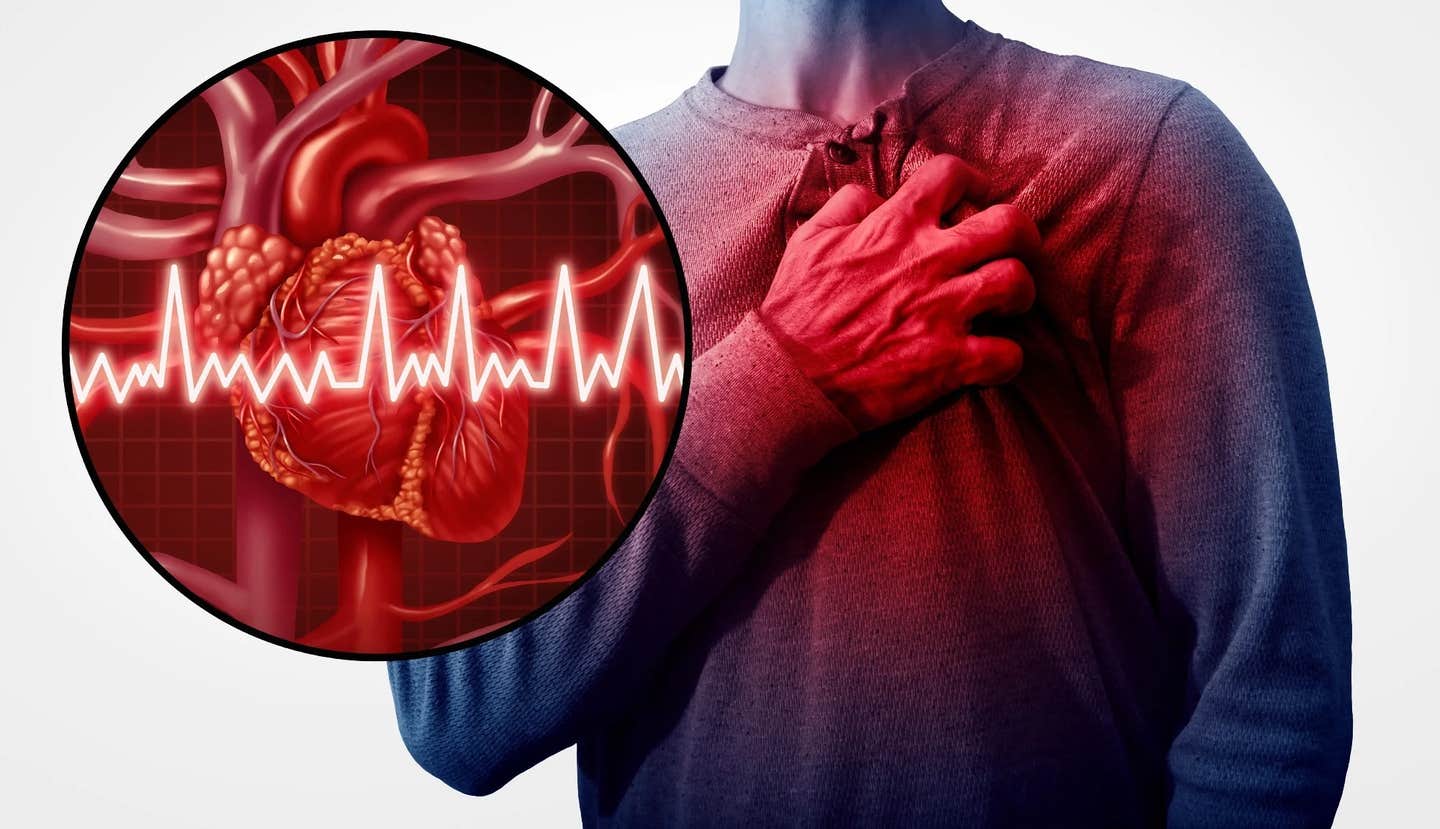Cutting-edge new research found a way to prevent heart disease
Scientists found nearly a dozen genes linked to the buildup of calcium in coronary arteries, a major risk factor for cardiovascular disease.

A recent study has revealed nearly a dozen genes that play a role in calcium accumulation in the arteries. (CREDIT: CC BY-SA 4.0)
An international team of scientists has uncovered nearly a dozen genes linked to the buildup of calcium in coronary arteries, a major risk factor for cardiovascular disease.
This discovery offers new insights into genetic contributions to coronary artery health and could pave the way for targeted treatments. Given that coronary artery disease (CAD) is responsible for one in every four deaths in the United States, understanding its genetic underpinnings has significant implications for public health.
The Hidden Threat: Coronary Artery Calcification
Coronary artery calcification (CAC) is a silent warning sign of cardiovascular trouble, often preceding symptomatic CAD. As calcium deposits accumulate within the walls of the coronary arteries, they contribute to subclinical coronary atherosclerosis, a condition that can ultimately lead to heart attacks and other life-threatening complications. Physicians rely on non-invasive computed tomography (CT) scans to detect these calcium deposits, allowing for early identification of individuals at heightened risk.
Researchers found that CAC is not just a cardiovascular concern—it also correlates with a range of age-related diseases.
Studies suggest that individuals with high coronary calcium levels are more likely to develop dementia, cancer, chronic kidney disease, and even suffer from hip fractures. These findings underscore the systemic impact of vascular calcification and highlight the importance of early detection and intervention.
Despite the known hereditary component of CAC, only a handful of genes had previously been linked to calcium buildup in coronary arteries. This latest study expands the genetic landscape of coronary health, identifying previously unrecognized contributors that could help explain why some individuals develop extensive arterial calcification while others remain unaffected.
Dr. Clint L. Miller, a researcher at the University of Virginia School of Medicine’s Center for Public Health Genomics, emphasized the collaborative nature of the study. “By sharing valuable genotype and phenotype datasets collected over many years, our team was able to uncover new genes that may foreshadow clinical coronary artery disease,” he said. The research demonstrates the power of large-scale genetic analysis in uncovering novel disease mechanisms.
Related Stories
To breach this genetic frontier, Miller, in tandem with international collaborators, embarked on an ambitious project. Data from a staggering 35,000 individuals, hailing from both European and African ancestral backgrounds, became the bedrock of this extensive meta-analysis.
Miller said, “Coronary artery calcification reflects the vessel’s accumulation of lifetime exposure to risk factors.” Although previous explorations over the past decade had spotlighted several genes, Miller emphasized the imperative for broader and more inclusive research to truly decode the intricate pathways contributing to CAC.
Their rigorous approach bore fruit: over 40 candidate genes spanning 11 distinct chromosomal locations, all correlating with coronary artery calcification, were unearthed.
The novelty of these findings was underscored by the fact that eight of these genetic locations had never before been associated with coronary calcification. Further, five were entirely new discoveries in the broader context of coronary artery disease.
Several genes, like ENPP1, had been previously documented in rare arterial calcifications in infants. But now, its broader implications became clear. Moreover, the exploration illuminated genes within the adenosine signaling pathway, a known inhibitor of arterial calcification.
From Lab to Clinic: The Road Ahead
With this fresh genetic panorama laid out, the challenge and opportunity now is in therapeutic translation. These genetic insights could pave the way for precision medicine, where specific genes or their resultant proteins could be targeted using drugs, potentially curtailing the progression of CAD.
Interestingly, some genes might even be influenced through dietary modifications or supplementation, creating a holistic approach that marries pharmacology with nutrition. Vitamins C and D, for instance, could emerge as potential agents in this battle against CAD.
Miller, with optimism, conveyed the potential of this groundbreaking research, “We look forward to continued progress in translating these preliminary findings to the clinic, and also to identifying additional genes that could generalize risk prediction across more diverse populations.”
These discoveries hold monumental implications. By proactively identifying and managing genetic risks, we stand on the cusp of redefining cardiac care. In a world where coronary artery disease claims over 17 million lives annually, these genetic revelations could truly be a paradigm shift, setting us on a path towards a healthier, heartier future.
Note: Materials provided above by The Brighter Side of News. Content may be edited for style and length.
Like these kind of feel good stories? Get The Brighter Side of News' newsletter.



